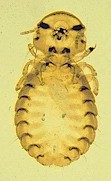lohoff1024
In the Brooder
- Jan 20, 2017
- 19
- 8
- 17
My flock of 6 has ear mites, and I have tried putting oil in their ears but it doesn't seem to help. I don't have the money to bey elector psp, what are some cost effective options for killing the suckers?






